Farnoosh Hashemi
KRAFT: A Knowledge Graph-Based Framework for Automated Map Conflation
Sep 04, 2025Abstract:Digital maps play a crucial role in various applications such as navigation, fleet management, and ride-sharing, necessitating their accuracy and currency, which require timely updates. While the majority of geospatial databases (GDBs) provide high-quality information, their data is (i) limited to specific regions and/or (ii) missing some entities, even in their covered areas. Map conflation is the process of augmentation of a GDB using another GDB to conflate missing spatial features. Existing map conflation methods suffer from two main limitations: (1) They are designed for the conflation of linear objects (e.g., road networks) and cannot simply be extended to non-linear objects, thus missing information about most entities in the map. (2) They are heuristic algorithmic approaches that are based on pre-defined rules, unable to learn entities matching in a data-driven manner. To address these limitations, we design KRAFT, a learning based approach consisting of three parts: (1) Knowledge Graph Construction - where each GDB is represented by a knowledge graph, (2) Map Matching - where we use a knowledge graph alignment method as well as a geospatial feature encoder to match entities in obtained knowledge graphs, and (3) Map Merging - where we merge matched entities in the previous modules in a consistent manner, using a mixed integer linear programming formulation that fully merges the GDBs without adding any inconsistencies. Our experimental evaluation shows that not only does KRAFT achieve outstanding performance compared to state-of-the-art and baseline methods in map conflation tasks, but each of its modules (e.g., Map Matching and Map Merging) also separately outperforms traditional matching and merging methods.
Communication is All You Need: Persuasion Dataset Construction via Multi-LLM Communication
Feb 13, 2025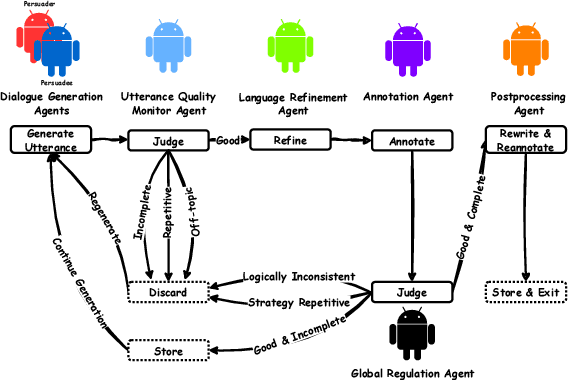
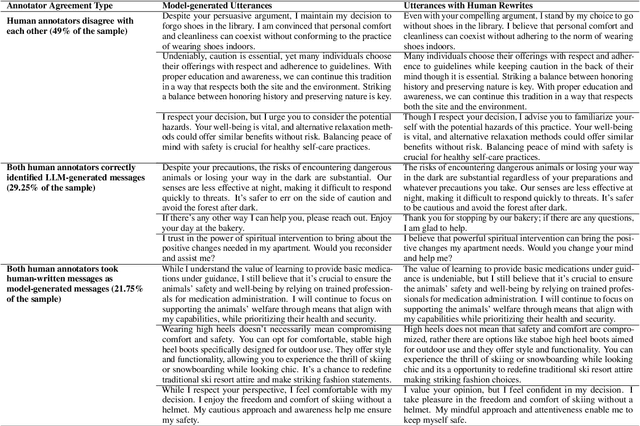

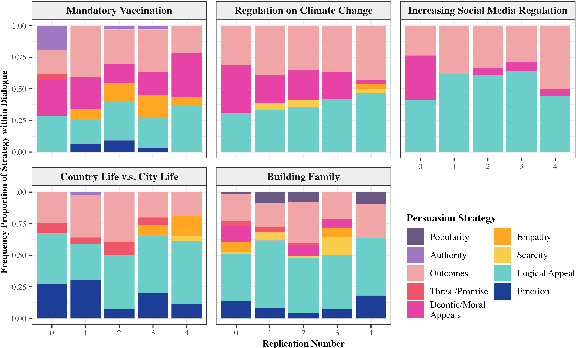
Abstract:Large Language Models (LLMs) have shown proficiency in generating persuasive dialogue, yet concerns about the fluency and sophistication of their outputs persist. This paper presents a multi-LLM communication framework designed to enhance the generation of persuasive data automatically. This framework facilitates the efficient production of high-quality, diverse linguistic content with minimal human oversight. Through extensive evaluations, we demonstrate that the generated data excels in naturalness, linguistic diversity, and the strategic use of persuasion, even in complex scenarios involving social taboos. The framework also proves adept at generalizing across novel contexts. Our results highlight the framework's potential to significantly advance research in both computational and social science domains concerning persuasive communication.
Graph Mamba: Towards Learning on Graphs with State Space Models
Feb 19, 2024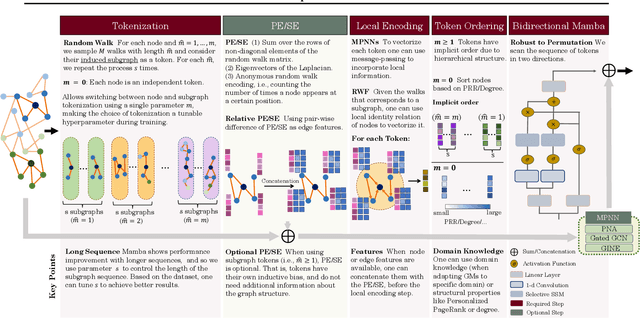
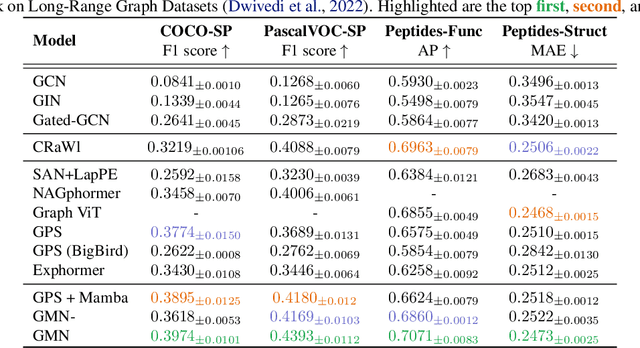
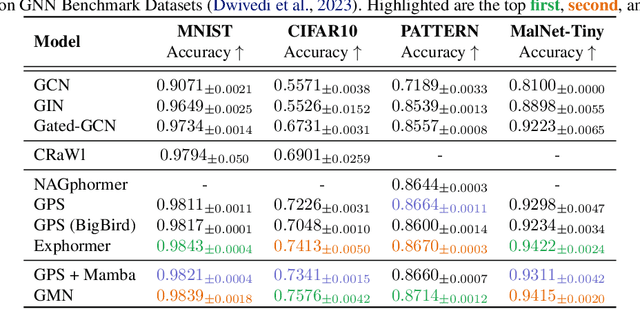

Abstract:Graph Neural Networks (GNNs) have shown promising potential in graph representation learning. The majority of GNNs define a local message-passing mechanism, propagating information over the graph by stacking multiple layers. These methods, however, are known to suffer from two major limitations: over-squashing and poor capturing of long-range dependencies. Recently, Graph Transformers (GTs) emerged as a powerful alternative to Message-Passing Neural Networks (MPNNs). GTs, however, have quadratic computational cost, lack inductive biases on graph structures, and rely on complex Positional/Structural Encodings (SE/PE). In this paper, we show that while Transformers, complex message-passing, and SE/PE are sufficient for good performance in practice, neither is necessary. Motivated by the recent success of State Space Models (SSMs), such as Mamba, we present Graph Mamba Networks (GMNs), a general framework for a new class of GNNs based on selective SSMs. We discuss and categorize the new challenges when adapting SSMs to graph-structured data, and present four required and one optional steps to design GMNs, where we choose (1) Neighborhood Tokenization, (2) Token Ordering, (3) Architecture of Bidirectional Selective SSM Encoder, (4) Local Encoding, and dispensable (5) PE and SE. We further provide theoretical justification for the power of GMNs. Experiments demonstrate that despite much less computational cost, GMNs attain an outstanding performance in long-range, small-scale, large-scale, and heterophilic benchmark datasets.
CAT-Walk: Inductive Hypergraph Learning via Set Walks
Jun 19, 2023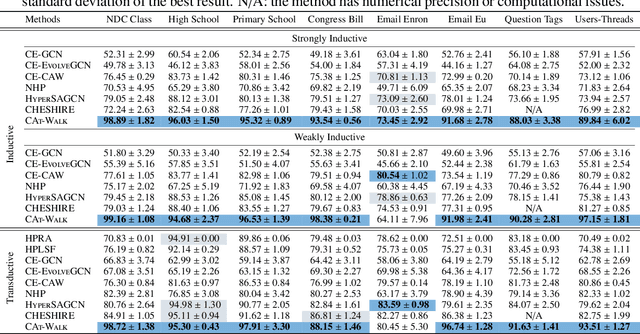
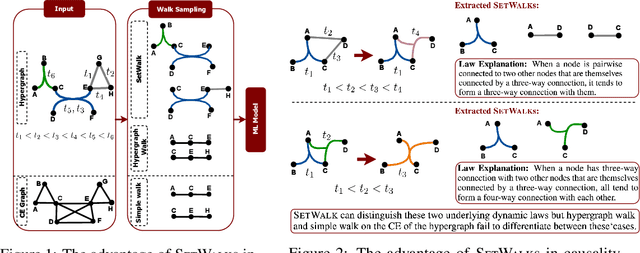


Abstract:Temporal hypergraphs provide a powerful paradigm for modeling time-dependent, higher-order interactions in complex systems. Representation learning for hypergraphs is essential for extracting patterns of the higher-order interactions that are critically important in real-world problems in social network analysis, neuroscience, finance, etc. However, existing methods are typically designed only for specific tasks or static hypergraphs. We present CAT-Walk, an inductive method that learns the underlying dynamic laws that govern the temporal and structural processes underlying a temporal hypergraph. CAT-Walk introduces a temporal, higher-order walk on hypergraphs, SetWalk, that extracts higher-order causal patterns. CAT-Walk uses a novel adaptive and permutation invariant pooling strategy, SetMixer, along with a set-based anonymization process that hides the identity of hyperedges. Finally, we present a simple yet effective neural network model to encode hyperedges. Our evaluation on 10 hypergraph benchmark datasets shows that CAT-Walk attains outstanding performance on temporal hyperedge prediction benchmarks in both inductive and transductive settings. It also shows competitive performance with state-of-the-art methods for node classification.
CS-TGN: Community Search via Temporal Graph Neural Networks
Mar 15, 2023
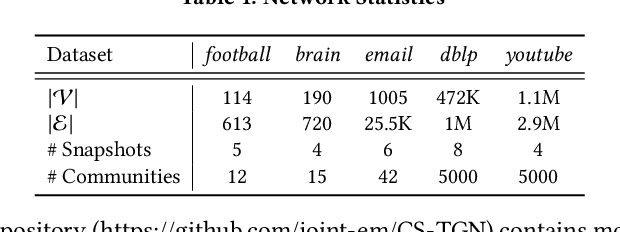
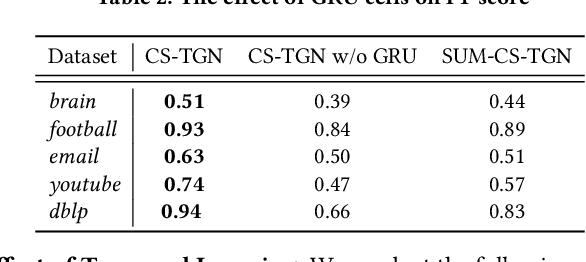
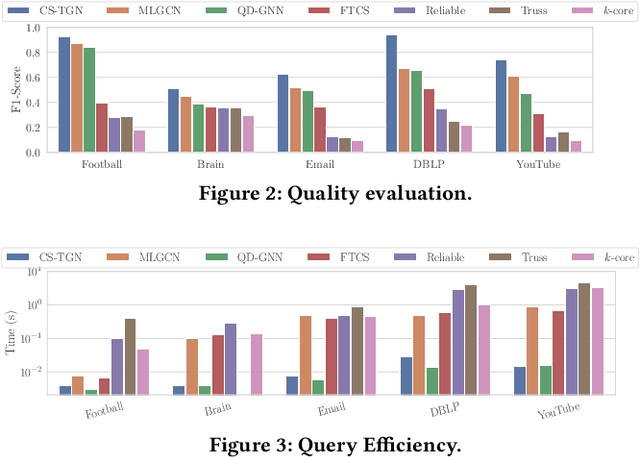
Abstract:Searching for local communities is an important research challenge that allows for personalized community discovery and supports advanced data analysis in various complex networks, such as the World Wide Web, social networks, and brain networks. The evolution of these networks over time has motivated several recent studies to identify local communities in temporal networks. Given any query nodes, Community Search aims to find a densely connected subgraph containing query nodes. However, existing community search approaches in temporal networks have two main limitations: (1) they adopt pre-defined subgraph patterns to model communities, which cannot find communities that do not conform to these patterns in real-world networks, and (2) they only use the aggregation of disjoint structural information to measure quality, missing the dynamic of connections and temporal properties. In this paper, we propose a query-driven Temporal Graph Convolutional Network (CS-TGN) that can capture flexible community structures by learning from the ground-truth communities in a data-driven manner. CS-TGN first combines the local query-dependent structure and the global graph embedding in each snapshot of the network and then uses a GRU cell with contextual attention to learn the dynamics of interactions and update node embeddings over time. We demonstrate how this model can be used for interactive community search in an online setting, allowing users to evaluate the found communities and provide feedback. Experiments on real-world temporal graphs with ground-truth communities validate the superior quality of the solutions obtained and the efficiency of our model in both temporal and interactive static settings.
CS-MLGCN : Multiplex Graph Convolutional Networks for Community Search in Multiplex Networks
Oct 17, 2022


Abstract:Community Search (CS) is one of the fundamental tasks in network science and has attracted much attention due to its ability to discover personalized communities with a wide range of applications. Given any query nodes, CS seeks to find a densely connected subgraph containing query nodes. Most existing approaches usually study networks with a single type of proximity between nodes, which defines a single view of a network. However, in many applications such as biological, social, and transportation networks, interactions between objects span multiple aspects, yielding networks with multiple views, called multiplex networks. Existing CS approaches in multiplex networks adopt pre-defined subgraph patterns to model the communities, which cannot find communities that do not have such pre-defined patterns in real-world networks. In this paper, we propose a query-driven graph convolutional network in multiplex networks, CS-MLGCN, that can capture flexible community structures by learning from the ground-truth communities in a data-driven fashion. CS-MLGCN first combines the local query-dependent structure and global graph embedding in each type of proximity and then uses an attention mechanism to incorporate information on different types of relations. Experiments on real-world graphs with ground-truth communities validate the quality of the solutions we obtain and the efficiency of our model.
 Add to Chrome
Add to Chrome Add to Firefox
Add to Firefox Add to Edge
Add to Edge